Embark on a journey into the heart of West Africa’s cocoa farming industry, where we unravel the intricacies of cultivation, from costs to profits. Whether you’re a novice or an experienced enthusiast, this blog simplifies the complex world of cocoa farming. Explore the fascinating dynamics, understand the investment landscape, and discover the path from planting to reaping profits. Join us in demystifying the cocoa cultivation process, catering to beginners and advanced enthusiasts alike.
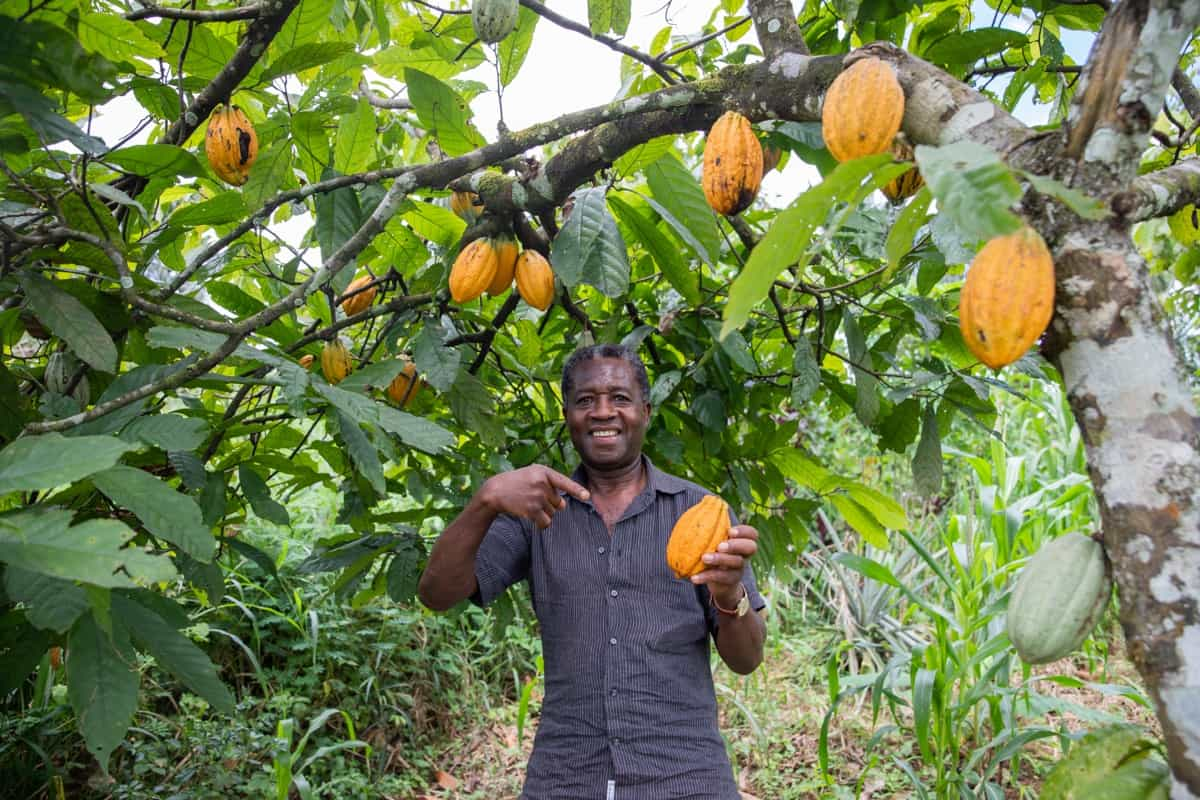
Cocoa Farming in West Africa: Overview and History
Cocoa is most important cash crops in West Africa, producing over 70% of the world’s cocoa beans. The leading countries are the Ivory Coast, Ghana, Nigeria, and Cameroon. Cocoa was introduced to Africa by Portuguese traders in the 15th century, who brought it from South America, where it originated.
Cocoa was initially grown in coastal areas but later spread inland as farmers sought new lands and markets. Cocoa farming became a major source of income and livelihood for millions of smallholders, who often intercropped it with food crops such as cassava, maize, and plantains.
Major Cocoa-Producing Countries in the West African Region
Ivory Coast: The largest producer of cocoa in the world, accounting for about 40% of global output. It has an estimated 800,000 cocoa farmers, who cultivate about 2.5 million hectares of land. The main cocoa varieties grown are Forastero and Trinitario.
Ghana: The second-largest producer of cocoa, accounting for about 20% of global output. It has an estimated 800,000 cocoa farmers, who cultivate about 1.6 million hectares of land. The main cocoa variety grown is Forastero.
Nigeria: The fourth-largest producer of cocoa in the world, accounting for about 6% of global output. It has an estimated 300,000 cocoa farmers, who cultivate about 800,000 hectares of land. The main cocoa varieties grown are Forastero and Criollo.
Cameroon: The fifth-largest producer of cocoa in the world, accounting for about 5% of global output. It has an estimated 600,000 cocoa farmers, who cultivate about 600,000 hectares of land. The main cocoa variety grown is Forastero.
Cocoa Varieties Grown in West African Region
There are three main types of cocoa varieties grown in the world: Criollo, Forastero, and Trinitario. Criollo is the rarest and most prized type, originating from Central America. It has a delicate flavor and aroma but is susceptible to pests and diseases. Forastero is the most common and hardy type, originating from South America. It has a strong flavor and high yield but is less aromatic and fine than Criollo. Trinitario is a hybrid of Criollo, Forastero, combining some of their qualities.
In case you missed it: How to Start Shrimp Farming in South Africa: Requirements, Key Rules, Management, Cost, Subsidy, and Loans
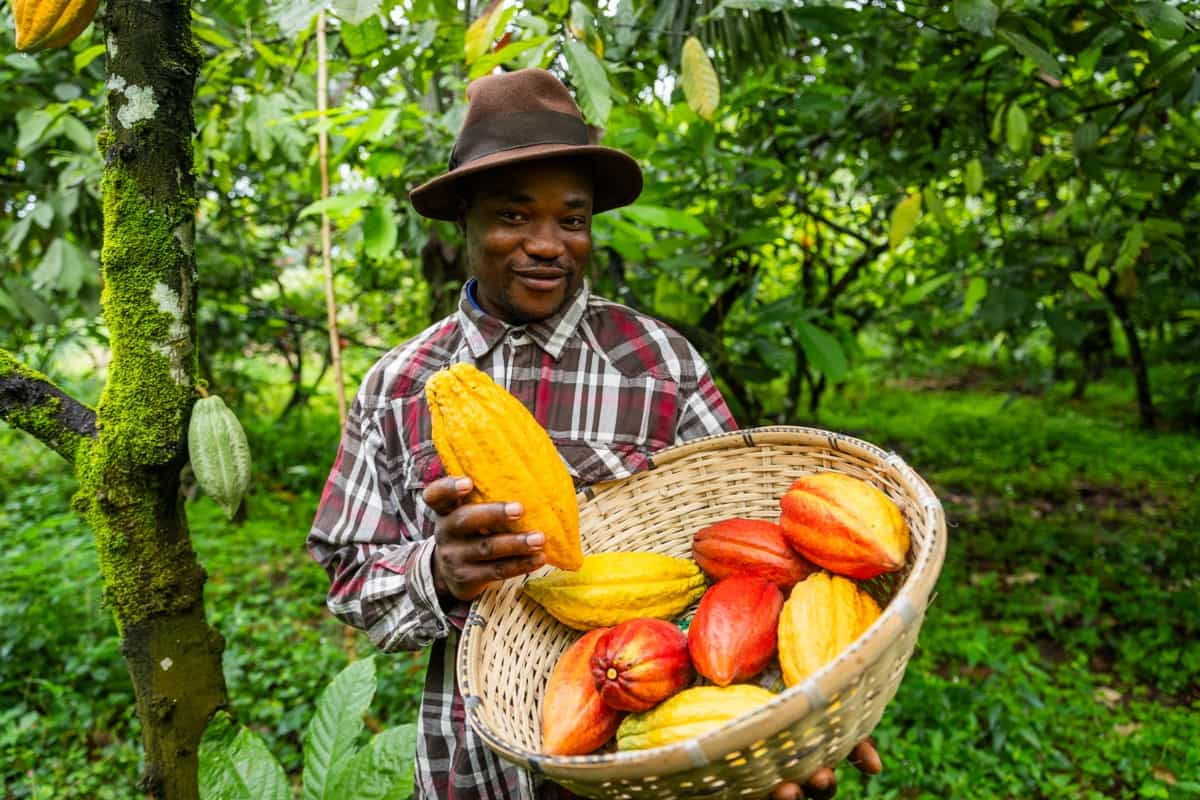
It has a good flavor and aroma and is more resistant than Criollo. In West Africa, the dominant variety is Forastero, which accounts for about 95% of the region’s production. It is well adapted to the tropical climate and soil conditions of the region. However, some farmers also grow Trinitario and Criollo varieties, especially in Nigeria and Cameroon, where they fetch higher prices.
West African Climate and Soil Condition
Cocoa thrives in hot and humid climates, with temperatures from 18°C to 32°C and rainfall ranging from 1,000 mm to 3,000 mm per year. It also prefers well-drained and fertile soils with a pH of 5 to 7.5. Cocoa can grow at altitudes up to 1,000 meters above sea level but performs better at lower elevations.
West Africa has a favorable climate and soil conditions for cocoa cultivation, especially in the forest zones that cover most of Ivory Coast and Ghana and parts of Nigeria and Cameroon. However, climate change poses a threat to cocoa production in the region, as it may alter the rainfall patterns, increase the frequency and intensity of droughts and floods, raise the temperatures, and increase the incidence of pests and diseases.
Cocoa Production Process in West Africa
Harvesting: Cocoa pods are harvested by hand when they are ripe and have a yellow or red color. They are usually cut from the trees using a machete or a knife attached to a long pole.
Fermenting: Cocoa pods are opened with a knife or a wooden mallet to extract the beans and pulp. The beans, pulp are then placed in wooden boxes or baskets covered with banana leaves or plastic sheets to ferment for about five to seven days. Fermentation is a step that develops the flavor and color of the beans.
Drying: Cocoa beans are spread on bamboo mats or trays under the sun to dry for about five to ten days. Drying reduces the moisture content of from about 60% to about 7%. Drying also prevents mold growth and insect infestation.
Sorting and Grading: Cocoa beans are sorted by size, color, and quality and graded according to national or international standards. The grades vary from country to country but generally reflect the percentage of defective beans, such as moldy, broken, or insect-damaged beans.
In case you missed it: How to Start Rabbit Farming in South Africa: Key Rules, Breeds, Business Plan, Cost, Profit, Subsidy, and Loan
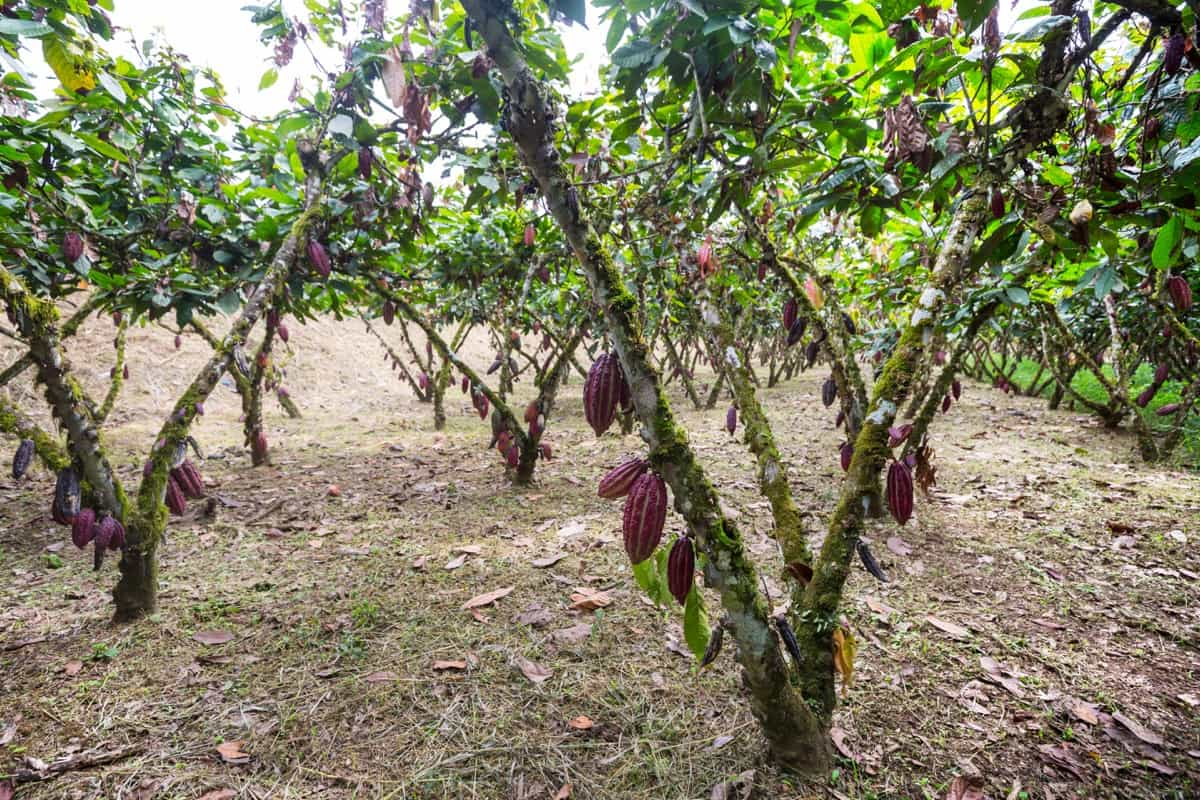
Bagging and Storing: Cocoa beans are packed in jute or sisal bags weighing about 60 to 65 kg each. The bags are labeled with the origin, grade, and weight of the beans. The bags are then stored in warehouses or sheds until they are sold or transported to the market.
Challenges Faced by Cocoa Farmers in West Africa
Cocoa farmers in West Africa face many challenges that affect their productivity, income, and livelihood.
Low prices and market volatility: Weather, politics, speculation, and consumption trends are just a few examples of the factors that affect global supply and demand, which determine cocoa prices. Cocoa prices fluctuate widely and unpredictably, making it difficult for farmers to plan and invest. Moreover, cocoa farmers receive only a small fraction of the final value of chocolate, as most of the profits go to intermediaries, traders, processors, and manufacturers.
Aging trees and low yields: Cocoa trees have a productive lifespan of about 25 to 30 years, after which they decline in yield and quality. Many cocoa farms in West Africa have old and unproductive trees that need to be replaced or rehabilitated. However, replanting or pruning requires time, labor, and money that many farmers need. As a result, cocoa yields in West Africa are low compared to other regions, averaging about 400 kg per hectare per year.
Pests and diseases: Cocoa trees are susceptible to pests, diseases that can reduce the quantity and quality of the pods and beans. Some of the common pests include cocoa pod borers, mirids, and rats. Some of the common diseases include black pod rot, witches’ broom, and swollen shoot virus. Pests and diseases can cause losses of up to 40% of the potential crop.
Lack of inputs and services: Cocoa farmers in West Africa need more access to improved planting materials, fertilizers, pesticides, tools, credit, extension, training, and information. These inputs and services are essential for improving the productivity and quality of cocoa. However, they are often unavailable, unaffordable, or inaccessible for many smallholders.
Poor infrastructure and transportation: Cocoa farmers in West Africa have to cope with poor road networks, inadequate storage facilities, high transportation costs, and long distances to markets. These factors increase the post-harvest losses, lower the quality of the beans, reduce the bargaining power of the farmers, and expose them to theft and corruption.
Certification and Sustainability in West African Cocoa Cultivation
Certification is a process that verifies cocoa production according to social, environmental, and economic standards. It aims to improve cocoa farmers’ livelihoods, protect the environment, ensure traceability in the supply chain, and meet consumer demand for ethical chocolate. Fairtrade guarantees minimum prices and premiums for cocoa farmers who comply with social and environmental criteria, promoting democratic participation, empowerment, gender equality, child protection, and community development.
Rainforest Alliance certifies cocoa farms following Sustainable Agriculture Network (SAN) standards, including biodiversity conservation, natural resource management, worker rights, farm management, and social responsibility. UTZ certifies cocoa farms following the UTZ Code of Conduct, including good agricultural practices, farm management, social conditions, environmental protection, and traceability.
In case you missed it: How to Start Organic Farming in South Africa: Key Rules, Certification, Business Plan, Crops, and Management
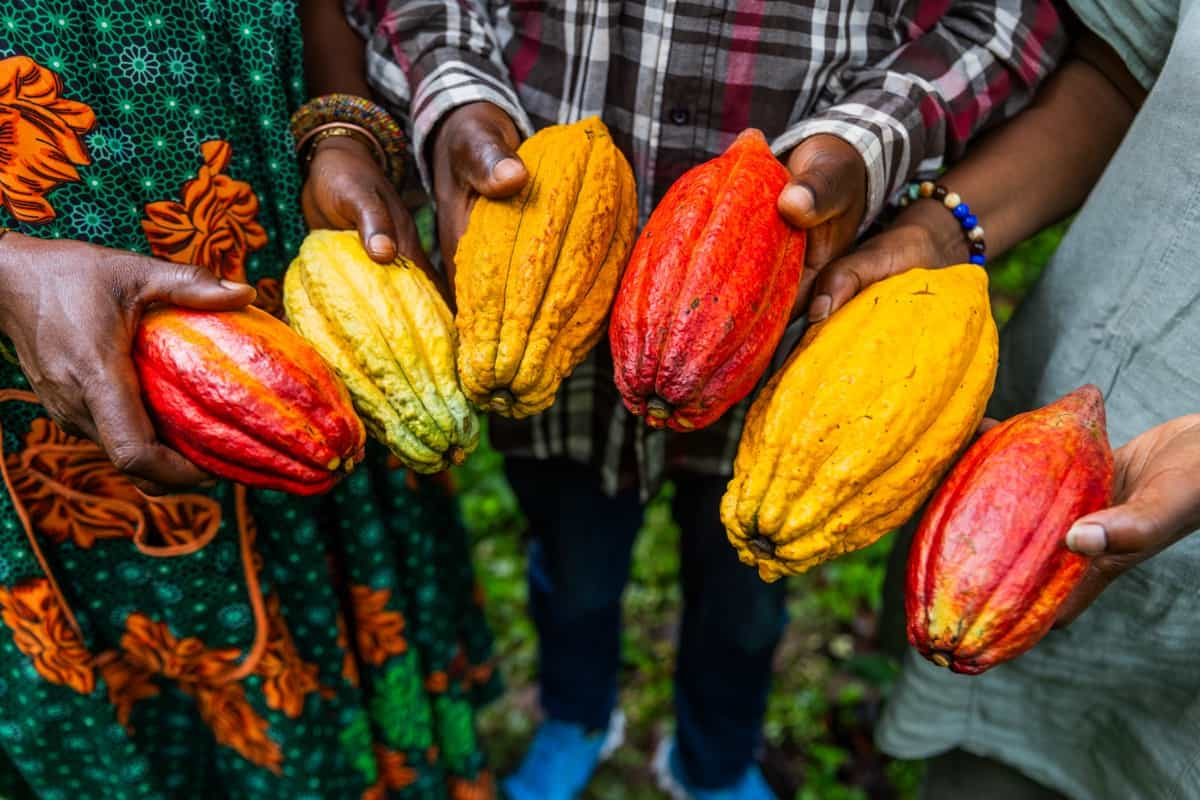
Organic certifies cocoa farms using natural methods without synthetic chemicals, genetically modified organisms, or irradiation, considering aspects of soil health, water conservation, biodiversity, animal welfare, and human health. Sustainability encompasses not only certification but also other initiatives and practices aimed at improving the social, environmental, and economic performance of cocoa production. CocoaAction, a voluntary strategy led by the World Cocoa Foundation, focuses on productivity and community, focusing on improving farm practices, rehabilitating old trees, and distributing improved planting materials.
West African Cocoa Marketing and Exportation
West Africa, the world’s largest cocoa producer, exports over 70% of the global supply to Europe and America. This leaves West African farmers and countries receiving only a small fraction of the final value of cocoa products. To improve marketing and exportation, regional organizations, governments, private sector actors, and development partners have undertaken initiatives. These include the Cocoa Producers’ Alliance (COPAL), the Cocoa Marketing Protocol, the African Cocoa Initiative (ACI), and the Cocoa Action Strategy.
COPAL promotes cooperation among cocoa-producing countries, ECOWAS adopts the Cocoa Marketing Protocol, and the ACI aims to increase the productivity, quality, and sustainability of cocoa production. The Cocoa Action strategy, launched in 2014, focuses on improving farmer practices, increasing access to inputs and services, strengthening farmer organizations, promoting gender equality, protecting children’s rights, and preserving the environment.
Cocoa Bean Prices and Market Volatility in West Africa
Cocoa bean prices are highly volatile, influenced by factors like supply and demand, weather conditions, political stability, exchange rates, and speculation. These fluctuations pose significant challenges for West African farmers, who rely on cocoa as their primary income source. These fluctuations impact their livelihoods, food security, and investment decisions. Farmers often receive low prices due to a need for bargaining power, market information, and infrastructure.
To address these issues, West African governments and other actors have implemented measures to stabilize and improve cocoa prices. These include the establishment of price stabilization funds in Ghana and Côte d’Ivoire, which aim to smooth out price fluctuations and guarantee a minimum price for farmers.
In Nigeria and Cameroon, forward contracts or futures markets are implemented, allowing farmers to hedge against price risks and secure a predetermined price for future deliveries. Furthermore, the cocoa sector in West Africa is promoted through value addition and diversification, involving processing cocoa beans into semi-finished products like butter, powder, liquor, or chocolate.
Government Policies and Support for Cocoa Farming
Cocoa farming is a crucial economic activity in West Africa, contributing to rural development, poverty reduction, and foreign exchange earnings. However, it faces challenges such as low productivity, aging trees, pests, diseases, climate change, land degradation, and social issues. To address these challenges, West African governments have implemented various policies and programs to support cocoa farming.
In case you missed it: Greenhouse Farming in South Africa: How to Start, Crops, and Cultivation Practices
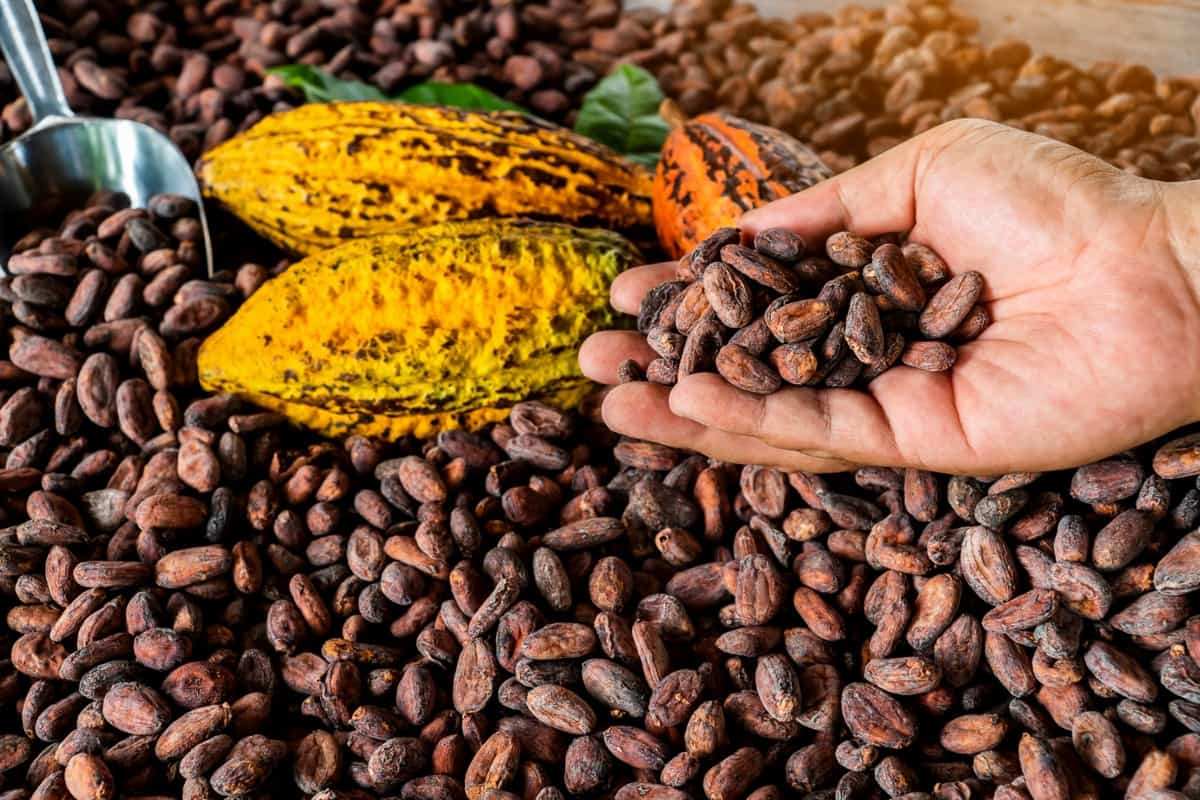
These include subsidies for inputs like fertilizers, pesticides, seeds, and seedlings, extension services for farmers on good agricultural practices, credit facilities for accessing inputs, infrastructure, and social services like healthcare, education, and water. These measures aim to reduce production costs, increase yield and quality, improve farmers’ skills and knowledge, improve their liquidity and capitalization, and enhance their access to input suppliers, buyers, and consumers.
Cocoa Production Statistics in West African Countries
According to the International Cocoa Organization (ICCO), the following are the cocoa production statistics for the main West African countries in the 2020/2021 crop year (October-September):
- Côte d’Ivoire: 2,225,000 tonnes, representing 45% of the world production and 63% of the African production.
- Ghana: 1,010,000 tonnes, representing 20% of the world production and 29% of the African production.
- Nigeria: 255,000 tonnes, representing 5% of the world production and 7% of the African production.
- Cameroon: 240,000 tonnes, representing 5% of the world production and 7% of the African production.
- Togo: 125,000 tonnes, representing 3% of the world production and 4% of the African production.
Cocoa Farming Cost in West Africa
The cost of cocoa farming in West Africa varies depending on factors such as the size of the farm, the type of inputs used, the level of mechanization, the labor intensity, and the location. However, according to a study by the International Institute of Tropical Agriculture (IITA), the average cost of cocoa farming in West Africa in 2018 was estimated at US$1,899 per hectare per year.
- Variable costs include inputs (US$1,057), labor (US$676), and transport (US$166).
- Fixed costs such as land rent (US$0), depreciation (US$0), and interest (US$0).
- The study also found that the cost of cocoa farming varied significantly across countries, ranging from US$1,273 per hectare per year in Ghana to US$2,530 per hectare per year in Côte d’Ivoire.
Cocoa Farming Profit in West Africa
The profit of cocoa farming in West Africa depends on several factors, such as the cost of production, the price of cocoa beans, the yield, the quality of cocoa beans, and the access to markets. However, according to a study by the International Institute of Tropical Agriculture (IITA), the average profit of cocoa farming in West Africa in 2018 was estimated at US$1,101 per hectare per year.
In case you missed it: Indigenous Veld Goat Farming in Africa: How to Start, Business Plan for Rasing to Care
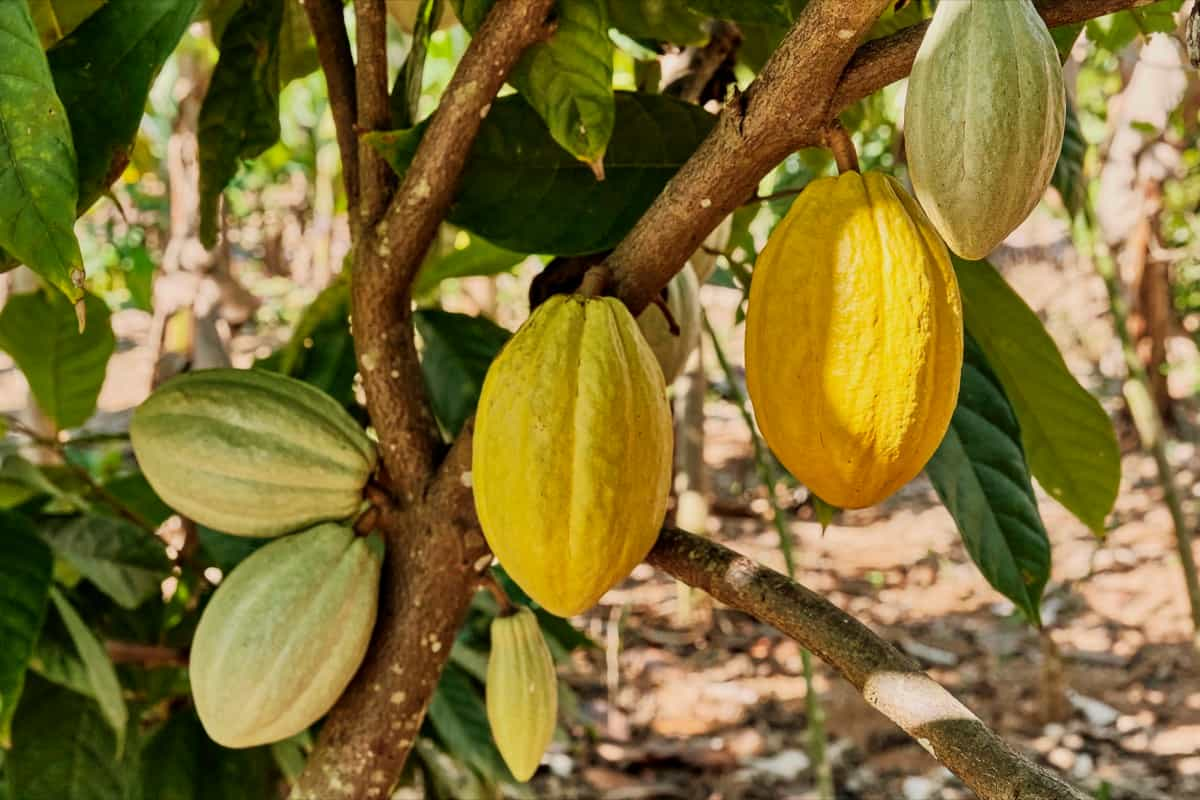
This is calculated by subtracting the average cost of cocoa farming (US$1,899) from the average revenue of cocoa farming (US$3,000). The study also found that the profit of cocoa farming varied significantly across countries, ranging from US$1,727 per hectare per year in Ghana to US$470 per hectare per year in Côte d’Ivoire.
Conclusion
Our exploration of cocoa farming in West Africa delves into the nuanced journey from costs to profits. Unveiling the intricacies of cultivation, this insight-rich journey equips enthusiasts with a comprehensive understanding of the cocoa industry, fostering informed decisions for sustainable and profitable farming practices in this vital agricultural sector.
- Types of Pesticides Used in Agriculture: A Beginner’s Guide
- Economical Aquaculture: A Guide to Low-Budget Fish Farming
- 15 Common Planting Errors That Can Doom Your Fruit Trees
- How to Make Houseplants Bushy: Effective Tips and Ideas
- Innovative Strategies for Boosting Coconut Pollination and Yield
- Pollination Strategies for Maximum Pumpkin Yield
- The Complete Guide to Chicken Fattening: Strategies for Maximum Growth
- Natural Solutions for Tulip Problems: 100% Effective Remedies for Leaf and Bulb-Related Issues
- Revolutionizing Citrus Preservation: Towards a Healthier, Greener Future
- Natural Solutions for Peony Leaf and Flower Problems: 100% Effective Remedies
- Maximizing Profits with Avocado Contract Farming in India: A Comprehensive Guide
- Natural Solutions for Hydrangea Problems: 100% Effective Remedies for Leaf and Flowers
- The Ultimate Guide to Choosing the Perfect Foliage Friend: Bringing Life Indoors
- From Sunlight to Sustainability: 15 Ways to Use Solar Technology in Agriculture
- The Ultimate Guide to Dong Tao Chicken: Exploring from History to Raising
- The Eco-Friendly Makeover: How to Convert Your Unused Swimming Pool into a Fish Pond
- Mastering the Art of Delaware Chicken Farming: Essentials for Healthy Backyard Flocks
- 20 Best Homemade Fertilizers for Money Plant: DIY Recipes and Application Methods
- How to Craft a Comprehensive Free-Range Chicken Farming Business Plan
- Brighten Your Flock: Raising Easter Egger Chickens for Beauty and Bounty
- How to Optimize Your Poultry Egg Farm Business Plan with These Strategies
- Subsidy for Spirulina Cultivation: How Indian Government Schemes Encouraging Spirulina Farmers
- Ultimate Guide to Raising Dominique Chickens: Breeding, Feeding, Egg-Production, and Care
- Mastering the Art of Raising Jersey Giant Chickens: Care, Feeding, and More
- Ultimate Guide to Raising Legbar Chickens: Breeding, Farming Practices, Diet, Egg-Production
- How to Raise Welsummer Chickens: A Comprehensive Guide for Beginners
- How to Protect Indoor Plants in Winter: A Comprehensive Guide
- Ultimate Guide to Grow Bag Gardening: Tips, Tricks, and Planting Ideas for Urban Gardeners
- Guide to Lotus Cultivation: How to Propagate, Plant, Grow, Care, Cost, and Profit
- Agriculture Drone Subsidy Scheme: Government Kisan Subsidy, License, and How to Apply Online
- Ultimate Guide to Raising Araucana Chickens: Breed Profile, Farming Economics, Diet, and Care
- Bringing Hydroponics to Classroom: Importance, Benefits of Learning for School Students
- Ultimate Guide to Raising Polish Chickens: Breed Profile, Farming Economics, Diet, and Care
- Ultimate Guide to Raising Australorp Chickens: Profile, Farming Economics, Egg Production, Diet, and Care
- Silkie Chicken Farming: Raising Practices, Varieties, Egg Production, Diet, and Care
- Sussex Chicken Farming: Raising Practices, Varieties, Egg Production, Diet and Care